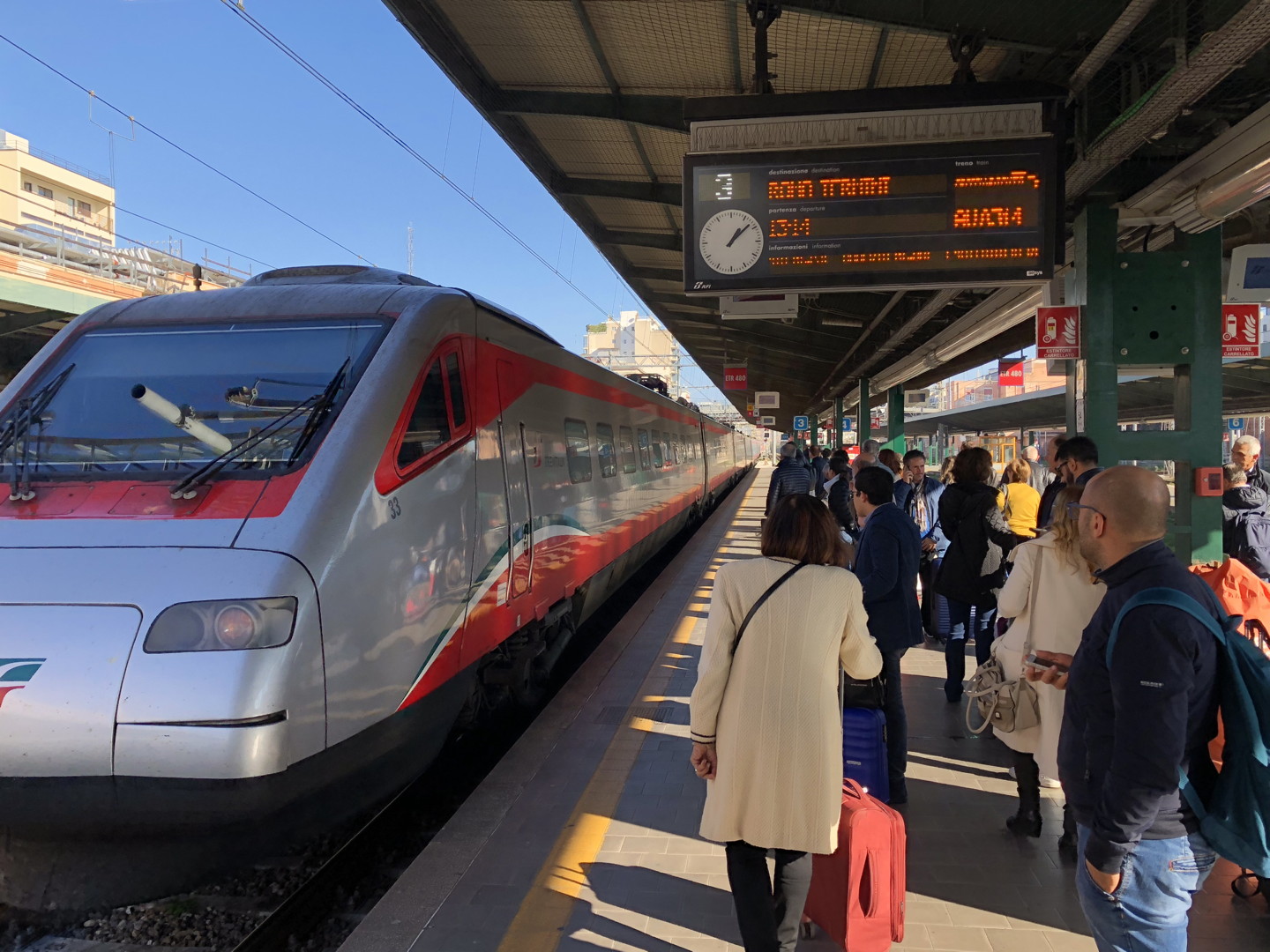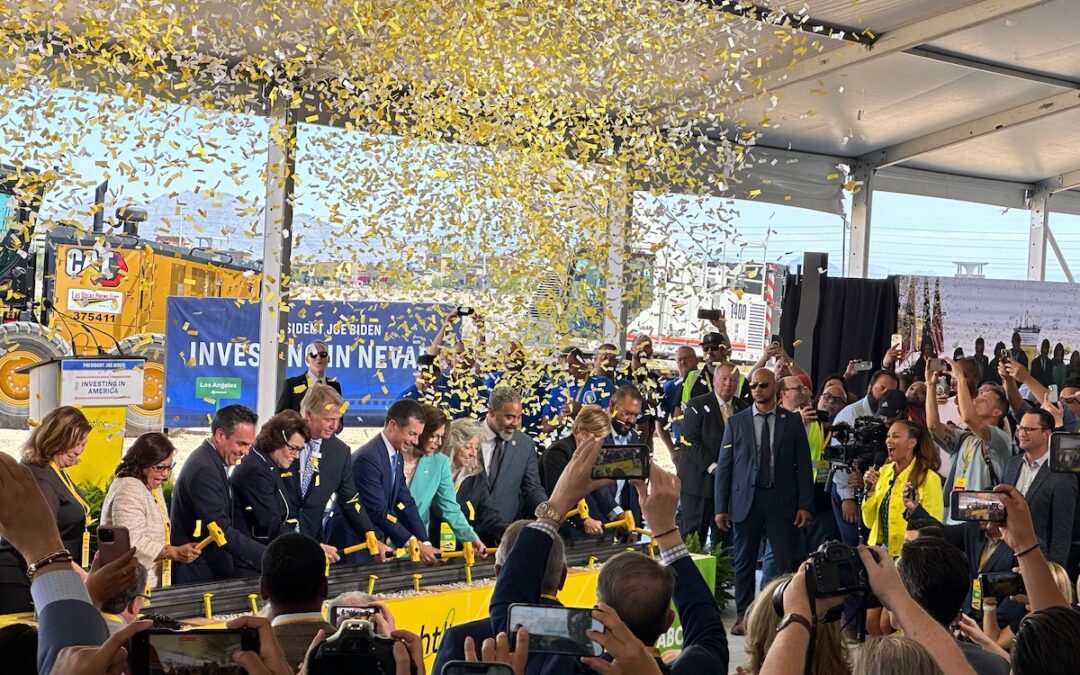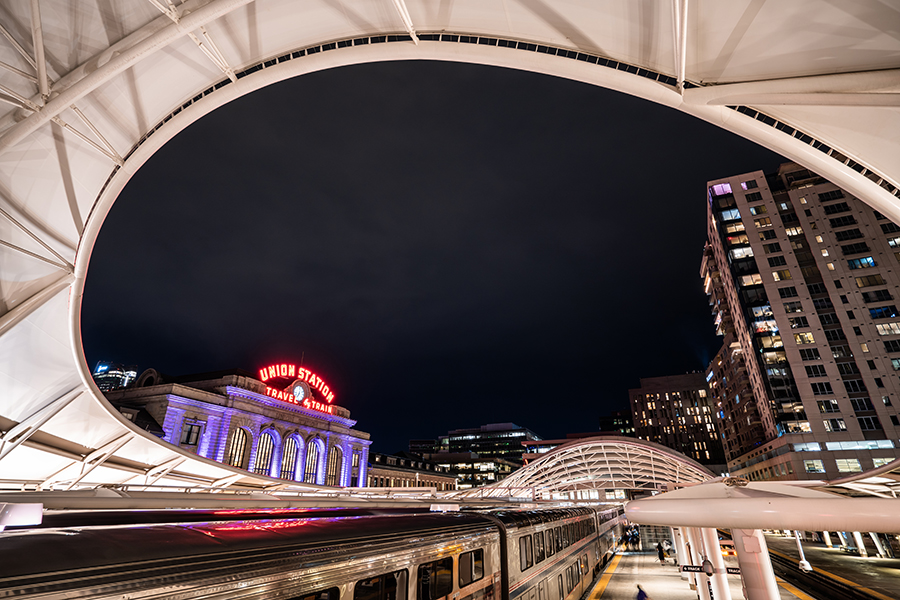The railroad Brightline today broke ground in Nevada on its new Brightline West project. Brightline will use trains traveling up to 200 miles per hour to cut the travel time between Las Vegas and Los Angeles in half. The company already operates successful trains...
Electric cars are generating a lot of buzz. President Biden’s infrastructure plan calls for installing 500,000 charging stations across the country. Tesla’s stock is off the charts. General Motors has gone all-in on. And Sen. Ron Wyden (D-OR) has introduced a bill to boost “consumer incentives for electric vehicles and associated charging infrastructure.”
The buzz is all about the potential of electric vehicles (EVs) to dramatically cut greenhouse gas emissions. At the Earth Day summit this week, Biden called climate change “the existential crisis of our time” and announced the goal of halving U.S. greenhouse gas emissions by 2030.
But if the goal is to radically reduce greenhouse gas emissions in the next decade, electric trains are the true EVs we’ve all been waiting for. The technology is already mature. And electric trains are the only tool powerful enough to move the needle quickly on a challenge of this magnitude.
Electric cars are still cars. They add to highway congestion and incentivize more car culture—which means more spending on new roads and lanes, more sprawl into greenfields, more hollowed out urban centers, more crashes and lives shattered or lost.
Like electric cars, electric trains produce low or zero emissions. But unlike electric cars, they actually shift us toward a paradigm of sustainable growth. They incentivize more density in urban areas; fewer parking lots; more walking and biking; and a sharp reduction in resource consumption devoted to building, storing, and disposing of cars. That’s in addition to being much safer than driving.
What’s really at stake, more than any particular effect, are the cascading impacts of electric cars versus electric trains. Building new car infrastructure sucks up more resources to prop up the paradigm of car-centric growth. New highways require more bridges and rest stops and emergency responders—and on and on, in a vicious cycle.
Building train infrastructure creates different patterns of growth and introduces entirely different incentives. Consider the case of the Bay Area’s commuter train system, Caltrain, which is electrifying about 50 miles of track between San Francisco and San Jose. The trains will run at speeds of up to 110 mph, with departures every 15 minutes throughout the day. Ridership on the system is projected to double when the project is done. (Average weekday ridership was roughly 64,000 people in 2019, up from 36,000 in 2009.)
That’s a lot of cars taken off the road—and a lot of money saved on road construction, repair, and emergency-response units. California would need to build 12 new highway lanes to create the equivalent passenger capacity of Caltrain’s electrification project.
But Caltrain’s project isn’t happening in isolation. It’s happening (partly) because of the state’s investments in high-speed rail. The two systems are being planned together. They also share some of the same funding streams and some of the same track. They’re inseparable.
The takeaway? Big investments create ripple-out effects throughout a transportation system. California’s investments in high-speed rail are already incentivizing better commuter rail, long before the full HSR system is built. In turn, better commuter rail will mean fewer cars on the road, less money spent on roads, and a better quality of life throughout the Bay Area.
It’s worth keeping these realities in mind as more bills and proposals to incentivize electric cars emerge over the coming months and years.
Electric cars should play some role in strategies to cut our greenhouse gas emissions. But getting serious about climate change will mean much more than just replacing the internal combustion engine with battery power. It will mean taking full advantage of the most powerful tool we now have to incentivize sustainable growth and transform the way we move around.
The tool that’s been right there under our nose all along. Electric trains.
The Latest from HSRA
Our Latest Blog Posts
Check out the latest news, updates, and high speed rail insights from our blog!




